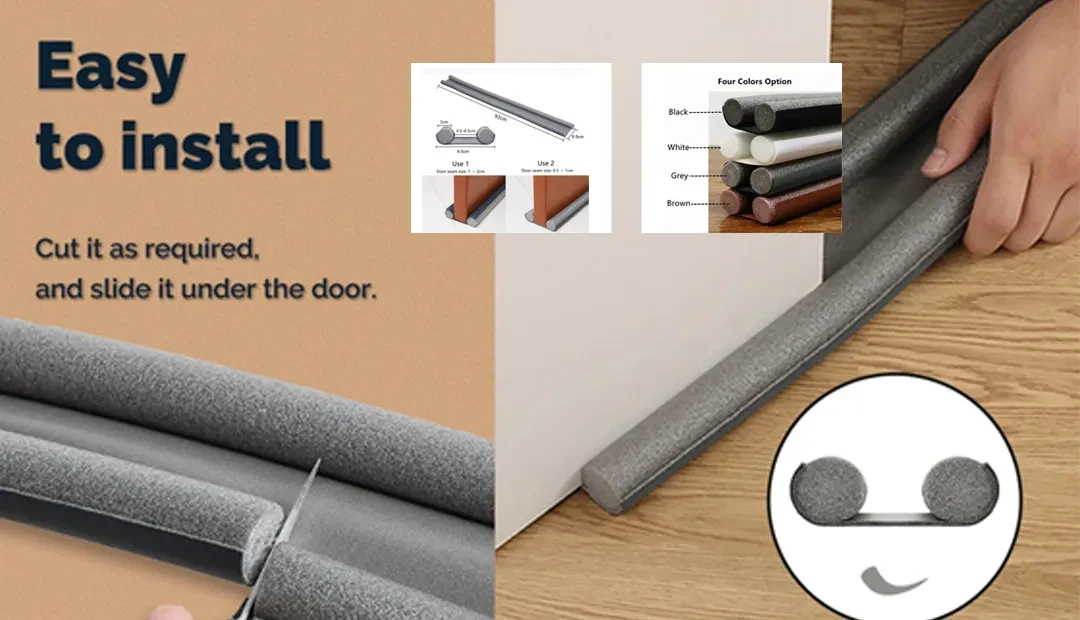Ways to Block Cold Air from Entering Under Your Door
How to Stop Cold Air from Coming Under Your Door
As the winter months approach, many homeowners face the challenge of keeping their homes warm and cozy. One of the most common issues that contribute to drafts and heat loss is cold air seeping under doors. This not only raises heating bills but also makes living spaces less comfortable. Fortunately, there are several effective techniques to stop cold air from coming under your door. Here’s a comprehensive guide to help you maintain a warm environment in your home.
Understanding the Problem
Before addressing how to stop cold air from entering your home, it’s essential to understand how air drafts occur. Underneath doors, especially exterior ones, small gaps can form due to poor sealing, settling of the house, or simple wear and tear over time. Additionally, doors that do not fit perfectly in their frames can contribute to air leaks, making it crucial to inspect and address these issues.
Solutions to Keep Cold Air Out
1. Weatherstripping
One of the most effective and inexpensive methods to prevent cold air from entering your home is by using weatherstripping. This material is available in various forms, such as adhesive-backed foam, V-strip, and rubber. To apply weatherstripping, clean the area around the door frame, measure the length of the frame, and cut the weatherstripping to size before sticking it in place. This simple addition can significantly reduce airflow and enhance insulation.
2. Door Sweeps
A door sweep is a simple yet effective solution. It consists of a long strip of material attached to the bottom of the door, designed to seal the gap between the door and the floor. Door sweeps can be made from various materials, including rubber, vinyl, and metal. Installation is straightforward—measure the width of your door, cut the sweep to size, and attach it using screws or adhesive. A properly installed door sweep can block drafts while allowing the door to open and close easily.
3. Draft Stoppers
stop cold air coming under door

Draft stoppers, also known as draft snakes, are fabric tubes filled with insulation material. They can be placed at the bottom of the door to prevent cold air from entering. These are particularly useful for doors that are not frequently opened, as they are easy to remove and reposition as needed. You can purchase a draft stopper or make one yourself using an old sock or fabric filled with rice or sand.
4. Thresholds
If the gap under your door is particularly large, consider installing a new threshold. A threshold is a strip of material that sits on the floor under the door, serving as a barrier against drafts. Make sure to select a threshold that fits your door frame properly and is adjustable if needed. This addition not only provides insulation but also serves as a transition between flooring materials.
5. Seal gaps properly
Inspect your door frame for any additional gaps or cracks. Use caulk to seal any visible cracks that may be allowing cold air to seep in. This not only improves insulation but also helps prevent moisture and pests from entering your home.
Additional Tips
- Install a Storm Door If you live in a region with harsh winters, consider adding a storm door. This outer door acts as an extra barrier against the elements, allowing for an air pocket that provides additional insulation. - Use Heavy Curtains While not a direct solution, heavy curtains can trap air and act as an additional layer of insulation at night. Open them during the day to take advantage of natural sunlight and warm up the space. - Regular Maintenance Regularly check the seals, weatherstripping, and door sweeps to ensure they remain effective over time. Replace them as necessary to maintain insulation and draft prevention.
Conclusion
By addressing the issue of cold air coming under your door, you can create a more comfortable and energy-efficient home. Incorporating these solutions not only keeps cold drafts at bay but also helps lower your heating bills during those chilly months. With a little time and effort, you can effectively seal your home against the winter chill and enjoy a warm, cozy living space all season long.
-
Under Door Draught Stopper: Essential ProtectionNewsJul.31,2025
-
Garage Door Seal and Weatherstrips for ProtectionNewsJul.31,2025
-
Edge Banding Tape for Perfect EdgesNewsJul.31,2025
-
Table Corner Guards and Wall Corner ProtectorsNewsJul.31,2025
-
Stair Nose Edging Trim and Tile Stair SolutionsNewsJul.31,2025
-
Truck Bed Rubber Mats for Pickup BedsNewsJul.31,2025
-
Window Weather Stripping for Noise ReductionNewsJul.29,2025